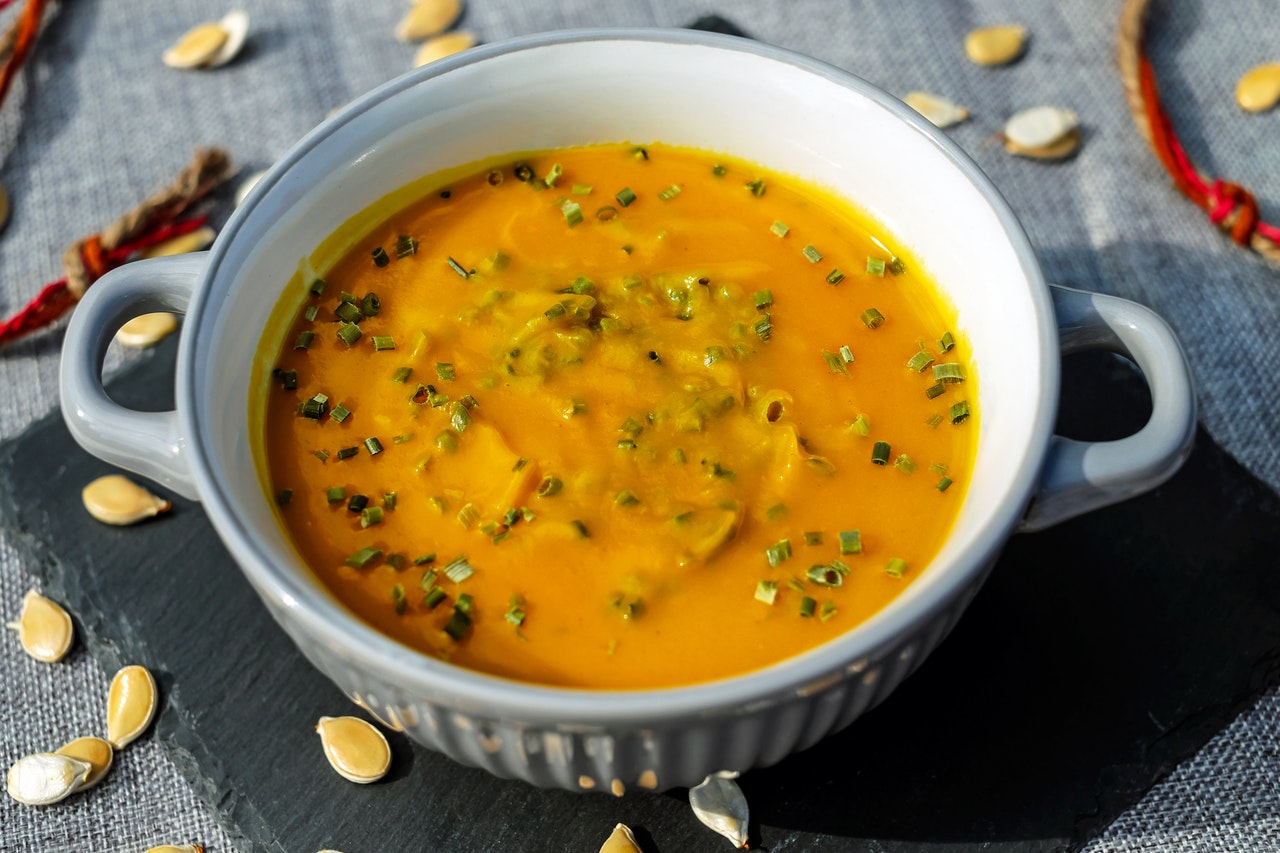The Surprising Benefits of Pumpkin
Surprising Health Benefits of Eating Pumpkin

Use pumpkin in soups and stews to add important nutrients to your diet.
Pumpkin is surprisingly healthy and versatile. It is very high in vitamin A and beta-carotene which are associated with eye health and reducing cancer risks. But, it turns out there are so many more benefits that we really should be cooking with pumpkin all year long. Pumpkin pie is one of my all-time favorite foods, but like most people, I only serve it during the winter holidays. This weekend I thought I’d look on-line for a healthier pie recipe and got side-tracked by the endless list of articles extolling the virtues of pumpkin.
Who knew? Pumpkin is a winter squash and technically a fruit – because it has seeds. It is 95% water, with a good amount of fiber. One cup of cooked pumpkin contains:
- Calories: 49
- Fat:2 grams
- Protein:2 grams
- Carbs:12 grams
- Fiber: 3 grams
- Vitamin A:245% of the Reference Daily Intake (RDI). Vitamin A can strengthen your immune system and help fight infections by stimulating the production of white blood cells. Vitamin A is also important for healthy skin and eyesight.
- Vitamin C:19% of the RDI. Vitamin C also increases white blood cell production, acts as an antioxidant protecting the eyes, and is linked to heart health. Vitamin C is necessary to produce collagen in skin.
- Potassium:16% of the RDI. Potassium appears to help lower blood pressure and reduce the risk of strokes.
- Copper:11% of the RDI
- Manganese:11% of the RDI
- Vitamin B2:11% of the RDI
- Vitamin E:10% of the RDI
- Iron:8% of the RDI
- Small amounts of magnesium, phosphorus, zinc, folate and several B vitamins.
- Very high in beta-carotene, which is turned into vit A in the body and is an anti-oxidant associated with lower risk of stomach and other cancers.
- Pumpkin provides lutein and zeaxanthin which may reduce the risks of age-related macular degeneration and cataracts.
- Pumpkin seeds are also nutritious & linked to health benefits.
- Canned pumpkin is almost as nutritious as fresh pumpkin and may even have more vitamins since it tends to have less water than puree you make yourself.
With all that good stuff, pumpkin is also very low in calories while containing a lot of water and fiber – all of which makes it a healthy food to cook with. Of course, I immediately think of pumpkin pie and muffins, but I discovered that there are many other ways to use pumpkin. For example, you can roast it with other vegetables, use the puree to thicken soups and stews, add it to yogurt & smoothies. Bake the pie recipe in a bowl and serve it as a custard to avoid the calories and gluten of pie crust. The recipes on-line are endless and look great – but I’m still going to start with a pie!
